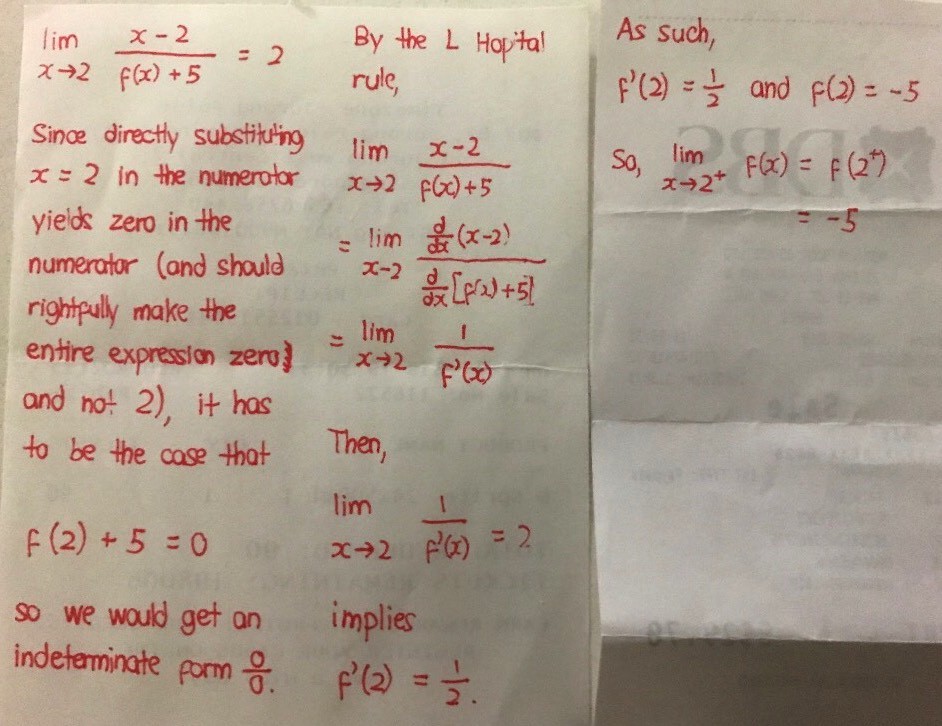Eric Nicholas K's answer to Noel's Junior College 2 H3 Maths Singapore question.
done
{{ upvoteCount }} Upvotes
clear
{{ downvoteCount * -1 }} Downvotes
I do not quite understand what the question is asking for, but I presume that lim x —> 2+ of f(x) should be -5, because this is the only way to make the fraction an indeterminate form.
The numerator is technically zero after substitution by x = 2, and in normal circumstances this should make the entire expression become 0 and not 2. The fact that the expression becomes 2 means that there must be something going on in the denominator, and we discover that the denominator has to also be zero.
This indeterminate form 0/0 is the only way we can further inspect the expression to see why the expression can have 2 as a limit.
In the following steps I attempted the usage of the L Hopital rule to see that the numerator goes to a fixed number 1 and the denominator goes to a simple expression f’(x), and the fact that a limit of 2 exists when x = 2 does exist suggests that f’(2) = 2. These steps are just to ensure that the limit does exist.
I am not sure how the actual expression f(x) could go like. Perhaps something like f(x) = 0.125x^2 - 5.5 based on the results. But it does not matter for this question.
The numerator is technically zero after substitution by x = 2, and in normal circumstances this should make the entire expression become 0 and not 2. The fact that the expression becomes 2 means that there must be something going on in the denominator, and we discover that the denominator has to also be zero.
This indeterminate form 0/0 is the only way we can further inspect the expression to see why the expression can have 2 as a limit.
In the following steps I attempted the usage of the L Hopital rule to see that the numerator goes to a fixed number 1 and the denominator goes to a simple expression f’(x), and the fact that a limit of 2 exists when x = 2 does exist suggests that f’(2) = 2. These steps are just to ensure that the limit does exist.
I am not sure how the actual expression f(x) could go like. Perhaps something like f(x) = 0.125x^2 - 5.5 based on the results. But it does not matter for this question.
Date Posted:
5 years ago


